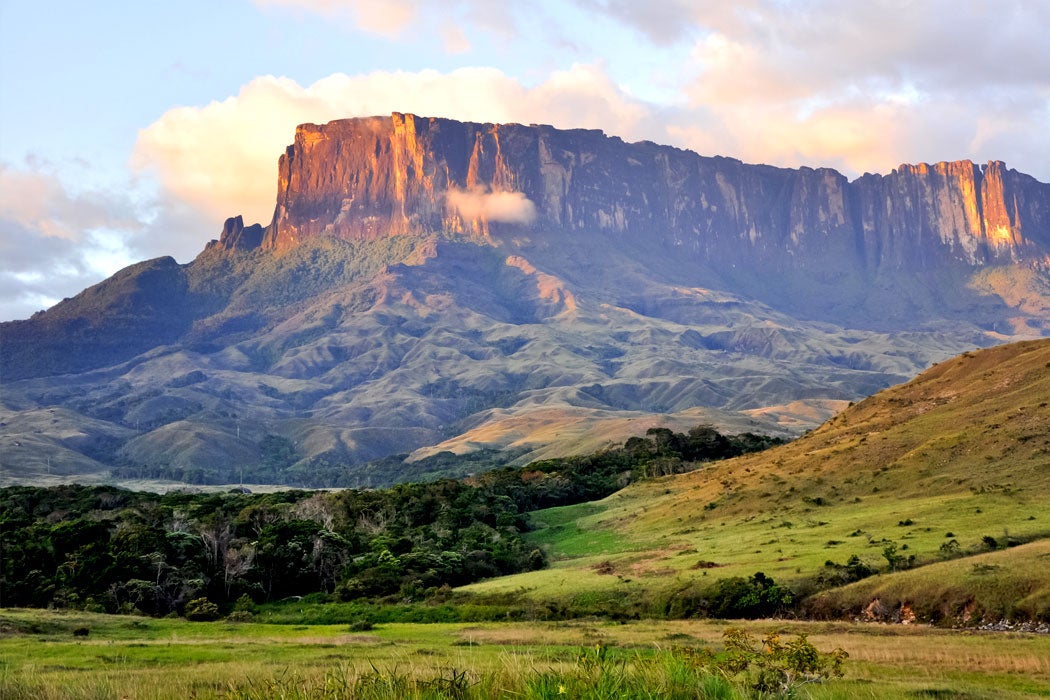In southeastern Venezuela, huge sandstone towers tower thousands of feet above the forest. The tepuis, as they are known, are the remnants of an enormous plateau. The flat formations are covered with bizarre rock formations. The primeval landscape served as inspiration for Sir Arthur Conan Doyle’s dinosaur-infested “The Lost World.” But the isolated summits are more than a great setting for a novel: they’re the center of an evolutionary mystery. Many species on the tepui summits are found nowhere else. How did those species get there?
While the species inhabiting the tepui highlands are well surveyed, their origins have not been. Biologists Patricia E. Salerno et al. note that are several species of frog found nowhere else on Earth but the tepui highlands, each native to a different summit. The assumption was that when the tepuis became isolated, around 60 million years ago, the species living there diverged from the lowland species, leading to a whole new set of species on the summits. Hence the “Lost World”—an ancient world left to its own devices for millions of years. This assumption was bolstered by the difficulty of accessing the summits—the vertical sides are so steep and high that each mountain resembles a fortress.
But appearing inaccessible isn’t the same as being genuinely inaccessible. Salerno and her colleagues used DNA analysis to trace the age of different tepui frog species. While several frog species did indeed split off and diversify on the summits, a lot of that happened relatively recently, “only” a few million years ago. So the tepuis’ isolation did not in fact completely prevent species exchange between the summits and the lowlands. Additionally, the radically different climatic conditions on the summits, which are cooler than the steamy lowlands, are probably a more formidable barrier than the cliffs—although the climates have changed over time.
Botantist Valentí Rull’s study of plants yielded similar results. Tepui summit vegetation is dominated by flowering herbs, meadows, and short shrubs, a contrast to the forested lowlands. Through radiocarbon dating and pollen studies, Rull found that in some cases older lineages of plants on the highlands were replaced by lowland species sometime within the last few thousand years. He concluded that there had been mixing between the tepui summits at periodic intervals.
The vegetation mixing was enabled by shifts in climate conditions. According to Rull, conditions conducive to mixing might not have existed until relatively recently. Much of the vegetation, at least, still evolved in isolation over millions of years. There may not be dinosaurs, but hints of a “Lost World” persist in these mysterious, unique landscapes.







